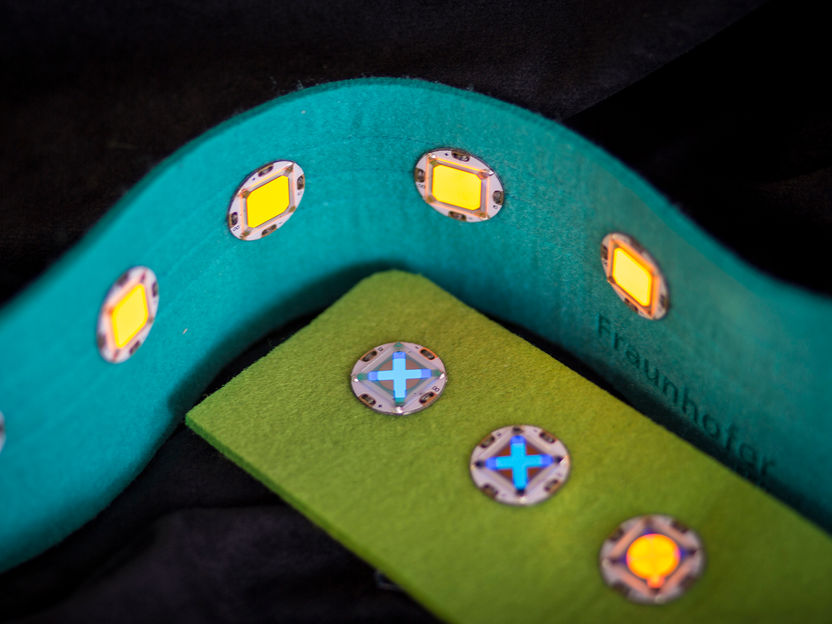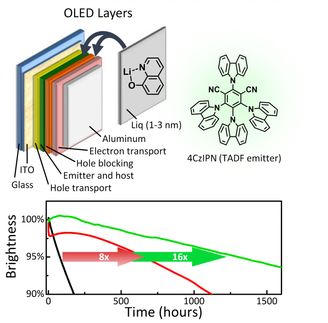OLED integration in textiles: functional and eye-catching
organic light-emitting diodes (OLED) are mainly known from televisions and smartphone displays. They can be used as lighting objects in car tail lights or lights. The Fraunhofer Institute for organic electronics, Electron Beam and Plasma Technology FEP as a partner for customer-specific OLED development and production is now presenting OLED elements that can be integrated into textiles at the Electronics System Integration Technology Conference ESTC 2018 from September 18 - 21, 2018 in Dresden.

O-BUTTON, customer-specific OLED elements for textile integration
© Fraunhofer FEP, Photograph: Jan Hesse
The versatile OLEDs can not only light in color, they can also be designed in any shape and even transparent or dimmable. Applied on wafer-thin foils, they are now finding their way into textiles. The range of applications is diverse and not limited to fashion trends or distinctive brand and design elements.
Jan Hesse, OLED design and integration specialist in the field of flexible organic electronics at Fraunhofer FEP, draws a vision: "The integration of luminous elements in clothing not only freshens up fashion designs, it can also create very concrete benefits: Luminous logos or applications are more easily noticed and considerably increase the visibility and thus the safety of the wearer, e.g. in road traffic.” Their use would be conceivable, for example in workwear for night logistics.
Since scientists can adapt OLEDs to specific wavelength ranges, special applications such as in medicine are also conceivable. Infrared light, for example, is successful in the therapy of skin diseases. There is the possibility of shirts with integrated flat infrared lights to be used for light therapy.
To simplify the integration of OLED elements in clothing and to give designers the opportunity to use the technology in an uncomplicated way, the scientists at the Fraunhofer FEP have developed a functional button. This "O-button" combines a wafer-thin foil-based OLED with a microcontroller on a conventional circuit board.
This circuit board in the shape of a button is attached to the textile with conductive yarn and supplied or controlled with electrical power. The OLED itself is continuously dimmable. Two-color-variable variants of the button are also available. There are almost no limits to the structuring of OLEDs. The textiles finished in this way are supposed to give designers ideas for new innovative designs and thereby open up further areas of application.
Fraunhofer FEP provides samples of the "O-BUTTON" for this purpose, can convert individualized designs into initial prototypes and can be a partner up to pilot production. Scientists are already collaborating with designers in the fashion industry. Challenges regarding further textile integration, washability or recycling are tackled and further developed together with partners. The first OLED fashion will be on display in stores in about three years.
Other news from the department science

Get the chemical industry in your inbox
By submitting this form you agree that LUMITOS AG will send you the newsletter(s) selected above by email. Your data will not be passed on to third parties. Your data will be stored and processed in accordance with our data protection regulations. LUMITOS may contact you by email for the purpose of advertising or market and opinion surveys. You can revoke your consent at any time without giving reasons to LUMITOS AG, Ernst-Augustin-Str. 2, 12489 Berlin, Germany or by e-mail at revoke@lumitos.com with effect for the future. In addition, each email contains a link to unsubscribe from the corresponding newsletter.



























































